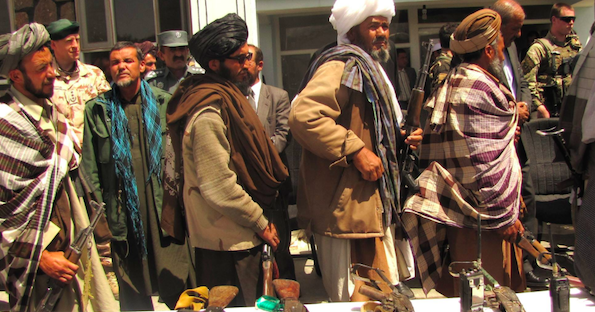Taliban’s comeback: The takeover of Kunduz

by isafmedia via Flickr CC BY 2.0)
With the attention of the world turned toward the swift escalation of conflicts in Syria and Iraq, it is not difficult to forget the conflicts that have been simmering for decades. Unfortunately, the world’s attention was turned back to the security of Afghanistan this week when Taliban militants overran a provincial capital city of Kunduz, a city of 300,000 inhabitants.
The city, in the northern part of Afghanistan, fell to the Taliban after they captured the police compound and Governor’s office. They also released around 500 prisoners. Security had been weakening in the area for quite some time, as the group had already been in control of some parts of the Kunduz province’s countryside. Nic Robertson, CNN’s international diplomatic editor, commented “since about April this year, the Taliban increased their strength in the countryside to the north of Kunduz and have essentially had it in their sights since then.” Now, with the takeover of the province’s capital city, they have further cemented their control and increased their influence.
In order to fully understand this conflict, some historical background is necessary.
This attack was the largest victory for the Taliban since they were ousted from power after a US-led invasion in 2001. The Taliban has its roots in the mujahideen groups that fought against the Soviet occupation of Afghanistan during the 1980s. These groups were originally formed in response to the communist Afghan government’s opposition to certain conservative aspects of Islam. After the Soviet Union invaded Afghanistan to protect its communist ally, the mujahideen engaged in guerrilla warfare against the occupation.
Eventually, these mujahideen groups, with financial backing of the United States, forced a Soviet withdrawal from Afghanistan. Soon, the patchwork of mujahideen groups turned against each other for control of the country. With foreign interests supporting different groups, the country quickly descended into chaos. In 1996, the Taliban, one of the mujahideen groups, took control of Kabul, Afghanistan’s capital.
In 2001, the United States invaded Afghanistan. The goal was to deny Al-Qaeda, the group that orchestrated the 9/11 attacks, its safe-haven by removing the Taliban from power. The invasion succeeded in ousting the Taliban, forcing militants to flee into Pakistan or the remote countryside. Until now, it has, for the most part, remained there.
The recent takeover of Kunduz is by far the largest victory for the Taliban since it was driven from power. The US invasion decimated the group, reducing them from a governing power to a weakened insurgency. The Taliban failed to gain significant power with NATO forces helping to support the new government and pacify the country. Now, with NATO gone, their ability take control of a major city shows signs of their recent strengthening.
The Afghan government has responded to the takeover of Kunduz by launching a counter-attack to retake the city. While they were assisted by American airstrikes, Afghan security forces face the challenge of managing the task without the NATO forces that they relied on for so long.
According to Civilians interviewed by the BBC, the situation in Kunduz is tense. Mohammad Yaqoub, a university student, said “The shops are all closed now. The bazaar is shut and no-one dares to come out on the streets. No-one can sleep.” He also recounts how the Taliban faced little resistance, with security forces fleeing the city upon their arrival. Waves of civilians are now leaving the city, adding to the millions whose lives have been uprooted by the violence that has plagued Afghanistan for decades.
It will hopefully be difficult for the greatly weakened Taliban to hold the city for an extended period of time. Nevertheless, this event proves that the Taliban is not as weakened as was previously thought (unfortunately), and the Afghan government is struggling to regain control. This event may mark a new chapter in the Afghan story: one where an emboldened Taliban once again poses a formidable threat to Afghan security.
Update:
Afghan security forces, with the assistance of the NATO airstrikes, have succeeded in driving the Taliban out of Kunduz. Fortunately, the Taliban was unable to hold Kunduz for long enough to establish it as a stronghold or base of operations. The retaking of Kunduz is a major victory for Afghan security forces, showing their ability to stabilize the country. Nevertheless, the takeover of Kunduz demonstrates that the Taliban has rebuilt some of its lost strength, and work must still be done to prevent another resurgence.
Sources: BBC, Wikipedia, CNN

Jack, a senior, is excited to begin his second year in The Talon and to work with Isabela as one of its two Editors-in-Chief. He is a fervent dog lover...










